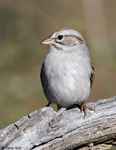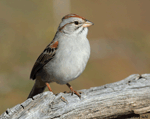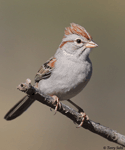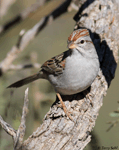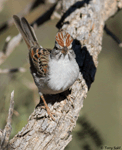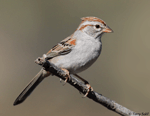| Length: 5.75 inches | Wingspan: 7.5 inches | Seasonality: Non-resident in South Dakota |
| ID Keys: Rufous-striped crown, small patch of rufous on lesser coverts of wing, streaks on back, fine brown stripe behind eye, dark throat stripe | ||
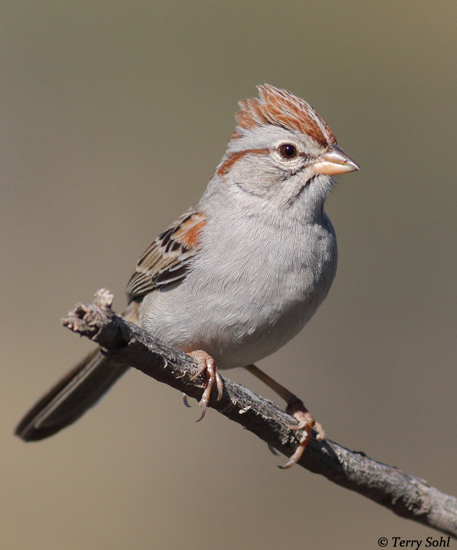 The
Rufous-winged Sparrow was one of the last North American species to be
named, with the first identification made in 1872. They are only found
in a quite small geographic range, in the arid southwestern U.S. and
northwestern Mexico. Unlike some other sparrow species in the arid
southwest, Rufous-winged Sparrows shun areas without a good cover of
vegetation, as they strongly prefer areas with thick grasses, or sometimes
shrubs.
The
Rufous-winged Sparrow was one of the last North American species to be
named, with the first identification made in 1872. They are only found
in a quite small geographic range, in the arid southwestern U.S. and
northwestern Mexico. Unlike some other sparrow species in the arid
southwest, Rufous-winged Sparrows shun areas without a good cover of
vegetation, as they strongly prefer areas with thick grasses, or sometimes
shrubs.
Habitat: Found in areas of dense grass, often with scattered shrubs as well. They can also sometimes be found in suburban area that are heavily vegetated.
Diet: Feeds mostly on insects, spiders, and other small invertebrates during the summer months, but will also feed on seeds. The diet in the winter may consist mostly of seeds.
Behavior: Forages by walking and hoping along the ground, or clambering through vegetation close to the ground. They will also occasionally fly up to capture flying insects.
Nesting: The nest of a Rufous-winged Sparrow is a deep cup of grasses, weeds, and twigs, often lined with animal hair. It is built in a dense shrub or cactus, often very close to the ground. The female lays 3 or 4 eggs, and the female alone incubates them. After the eggs hatch, both parents feed the young. The young leave the nest after about 10 days.
Song: The song of a Rufous-winged Sparrow is a series of accelerating, clear chip notes, sometimes ending in a trill.
Migration: Considered a permanent resident throughout their normal range, although post-breeding, some birds may move short distances.
Interactive eBird Map: Click here to access an interactive eBird map of Rufous-winged Sparrow sightings
Similar Species: In range most likely to be confused with the Chipping Sparrow, Brewer's Sparrow, Rufous-crowned Sparrow, or Cassin's Sparrow
Conservation Status: Populations appear to be stable. The IUCN lists the Rufous-winged Sparrow as a species of "Least Concern".
Further Information: 1) Cornell's All About Birds - Rufous-winged Sparrow
2) Audubon Guide - Rufous-winged Sparrow
3) Whatbird - Rufous-winged Sparrow
Photo Information: November 9th, 2015 - Coronado National Forest, south of Tucson, Arizona - Terry Sohl
| Click below for a higher-resolution map |
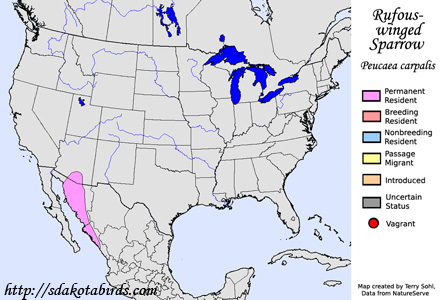 |
| South Dakota Status: Non-resident in South Dakota |
Additional Rufous-winged Sparrow Photos
